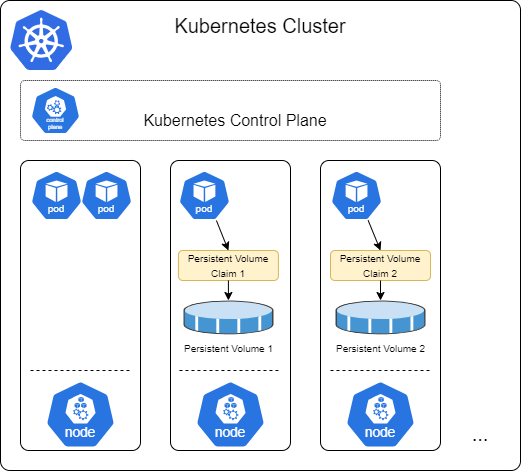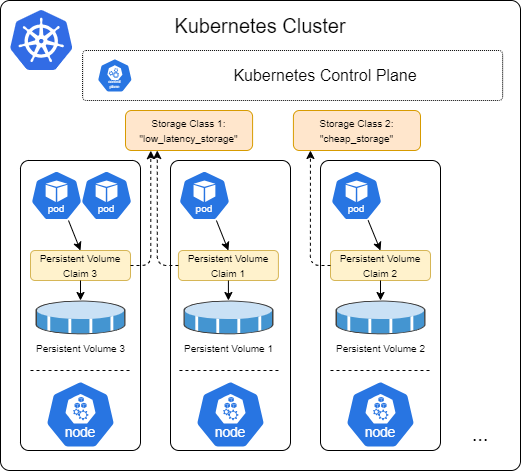Deploying, Scaling, and Monitoring Kubernetes Storage
Introduction to Kubernetes

Frank Heilmann
Platform Architect and Freelance Instructor
Persistent Volumes and Persistent Volume Claims

- Fundamental Objects for storage: Persistent Volumes (PV), maintained in parallel to Pods
- PVs are mapped to Pods using Persistent Volume Claims (PVC)
- A mapped PV allows data persistence when the Pod is stopped, killed, or restarted
- PVs enable the separation of storage and compute
Storage Classes

- PVs: provisioned either
- manually by an Kubernetes admin
- dynamically by regular user
- Dynamic provisioning happens via Storage Classes (SC) without human intervention
Storage Classes (SC):
- defined by Kubernetes admin
- different types (different latency, e.g., SDD vs HDD, different backup strategies)
If in doubt, use Storage Classes ;-)
Putting it all together
There are only three objects that make storage work:
PersistentVolumePersistentVolumeClaimStorageClass
A Pod with demand for persisted data uses a
PersistentVolumeClaim- This PVC has Kubernetes create a
PersistentVolumefor the Pod - This
PersistentVolumeis mapped to the claiming Pod - A named
StorageClassis used, which defines details like latency and backup strategy of the PV - This
PersistentVolumesurvives (together with stored data), even when thePodis terminated
Manifest Snippets
Pod with PersistentVolume
apiVersion: v1 kind: Pod ...spec: containers: ... volumeMounts: - name: pv-mydata mountPath: /mydatavolumes: - name: pv-mydata persistentVolumeClaim: claimName: datacamp-pvc
PersistentVolumeClaim with StorageClass
apiVersion: v1 kind: PersistentVolumeClaim metadata: name: datacamp-pvcspec: storageClassName: "standard" accessModes: - ReadWriteOnceresources: requests: storage: 5Gi
"kubectl" Commands For Storage
kubectloffers a complete set of commands to create and monitor Kubernetes Storage- Examples:
kubectl get sclists all available Storage Classeskubectl get pvclists all deployed Persistent Volume Claimeskubectl get pvlists all deployed Persistent Volumes- As usual,
kubectl apply -f <manifest>can be used to deploy storage resources that are declared in Manifests.
Let's practice!
Introduction to Kubernetes

